How to Install cPanel/WHM in RHEL/CentOS 5/6
cPanel is a Linux based web hosting control panel that gives a graphical interface and automation tools intended to improve the procedure of hosting a web site. cPanel additionally has order line and API-based access that permits outsider programming sellers, web hosting associations, and designers to automate standard system administration processes.
Features of cPanel:
cPanel control panel is extremely adaptable control panel for dealing with your hosting servers, It has bunches of highlights which make Web hosting easier for you. Some of them are listed below::
Step 1: In the event that you don’t have the most recent version, please update your OS to its most recent version, In CentOS and RHEL, we can just do it with yum bundle installer.
# yum install wget perl # yum update
Step 2: Once you’ve guaranteed the OS version, you don’t need to introduce whatever other reliance bundle cPanel auto installer script does for you. We can download cPanel installer file using following command.
# cd /opt # wget -N http://httpupdate.cPanel.net/latest
Step 3: After downloading installer script, execute the auto installer script, it takes 3-4+ hours to complete the installation depending on your server resources.
# sh latest
Sample Output:
Verifying archive integrity... All good.
Uncompressing cPanel & WHM Installer..............
____ _
___| _ \ __ _ _ __ ___| |
/ __| |_) / _` | '_ \ / _ \ |
| (__| __/ (_| | | | | __/ |
\___|_| \__,_|_| |_|\___|_|
Installer Version v00029 r6849459174e3809f72de2q7t8s427g4e7a399s77
Beginning main installation.
------------------------------------
------------------------------------
Note:
Step 4: After that you have to finish the establishment wizard from its web interface and you can get to WHM with the following URL.
http://your-server-ip:2087 OR http://your-host-name:2087
Step 5: Follow bellow steps to complete the installation:
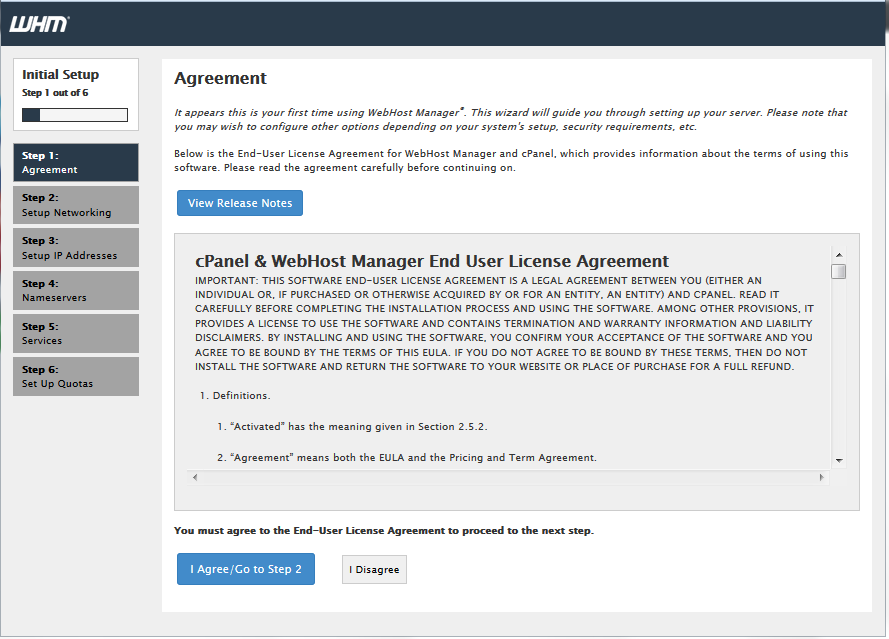
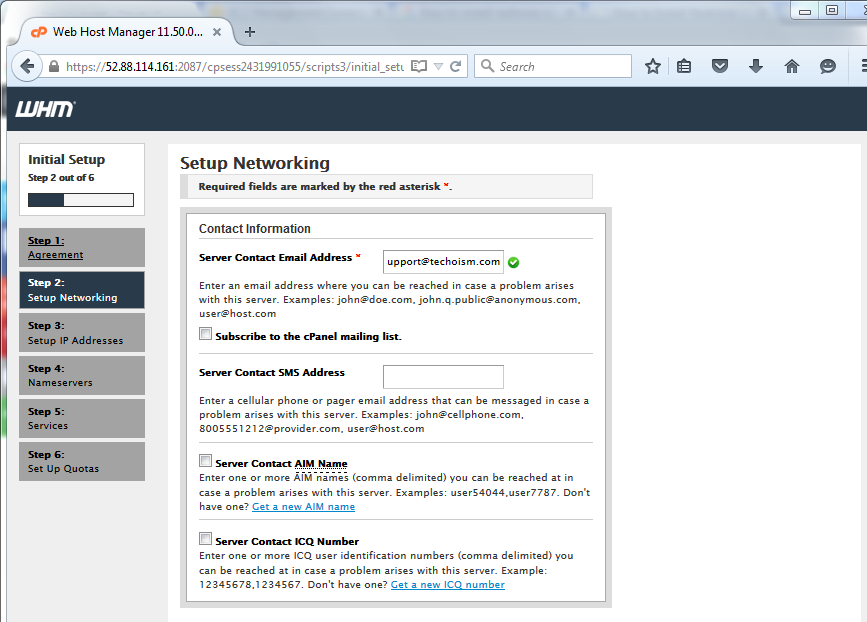
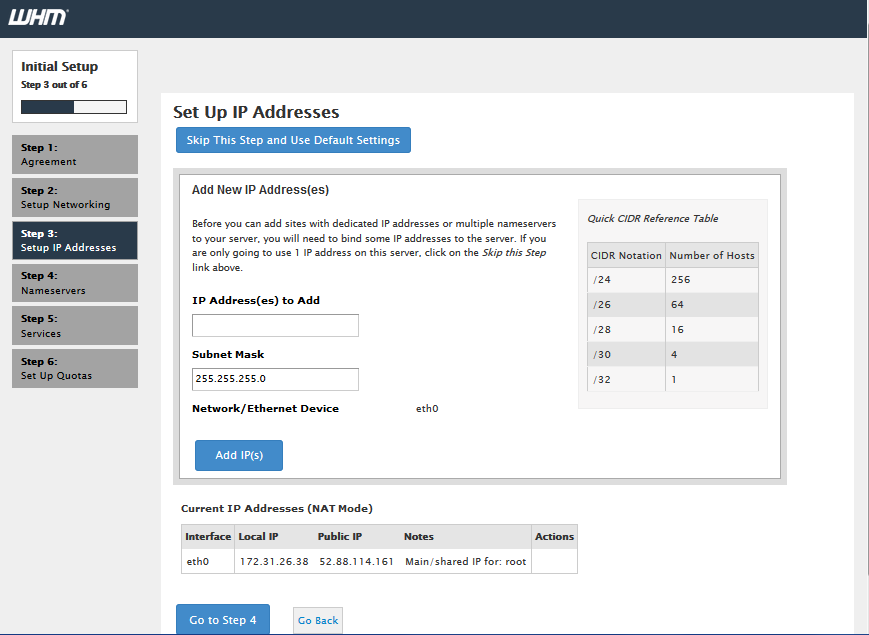
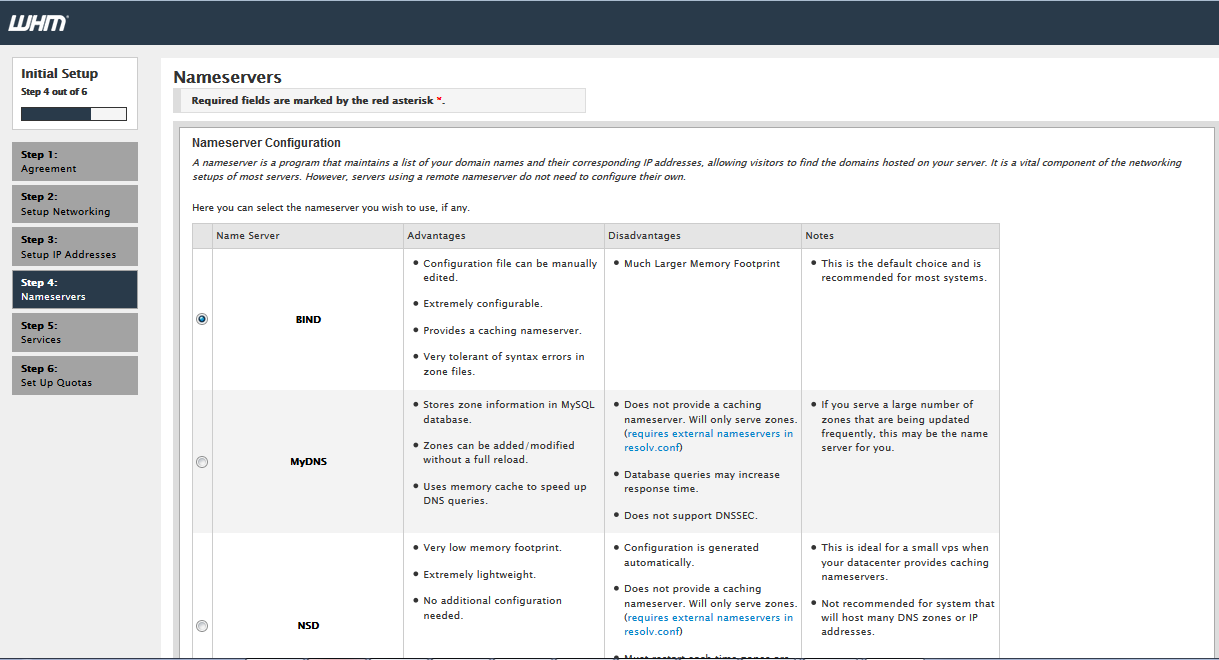
In the same step, please record Name Servers you need to use in configuration. Likewise, Add an A record for your hostname and nameserver by selecting the check box and click “Go to step 5”.
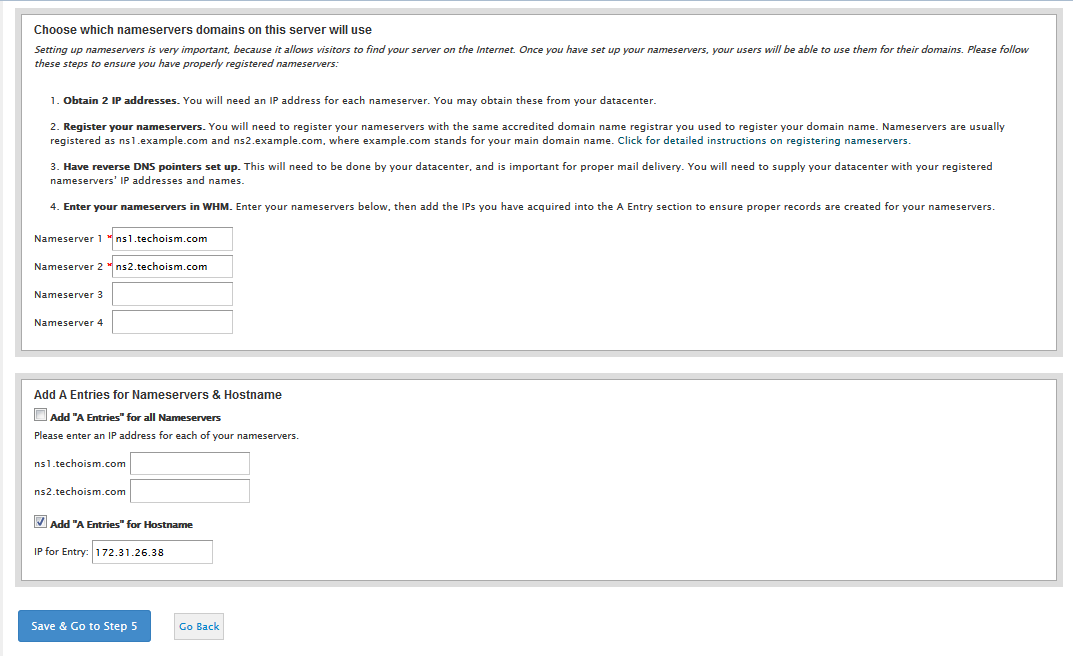
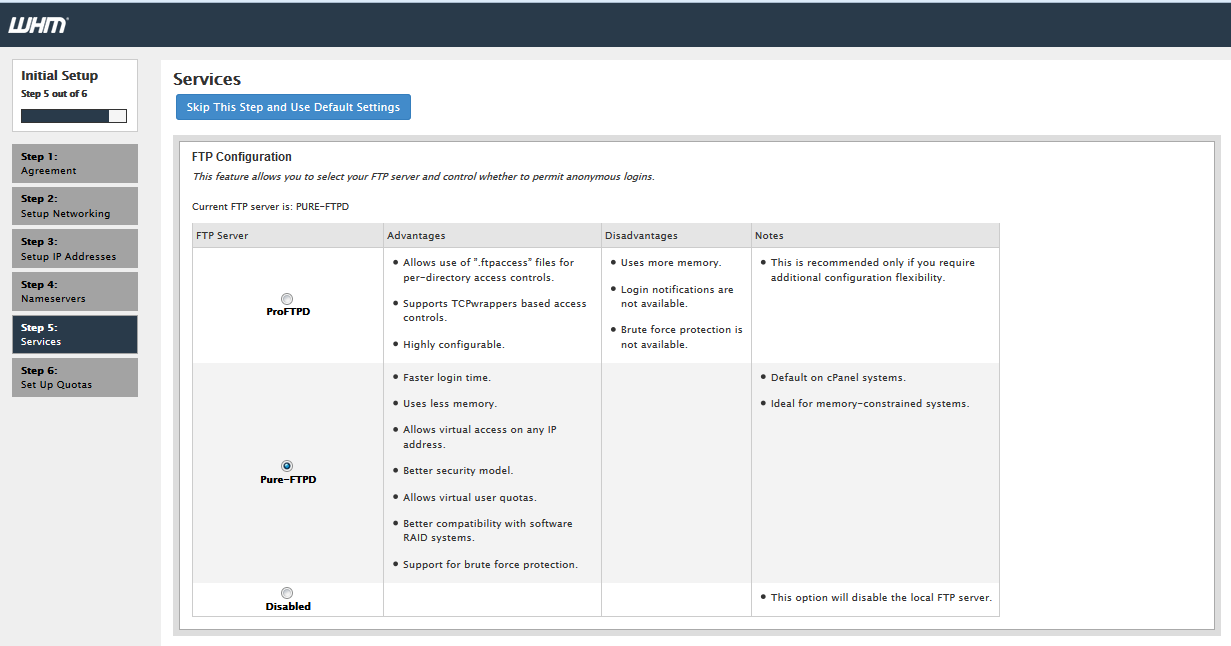
In the same wizard, you can choose your Mail server to be utilized for all your mailing activities in future. You can include MTAs like Exim with your cPanel in future.
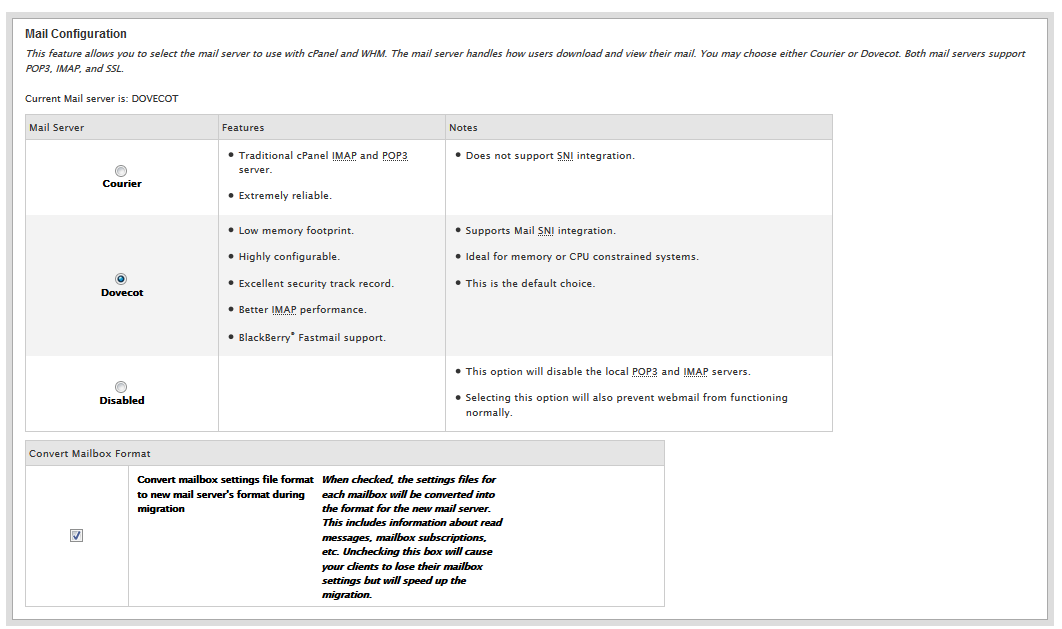
Cphulk brute force protection recognizes and detects and block false password attacks activities and block their IP for your server and click on “Go to step 6”.
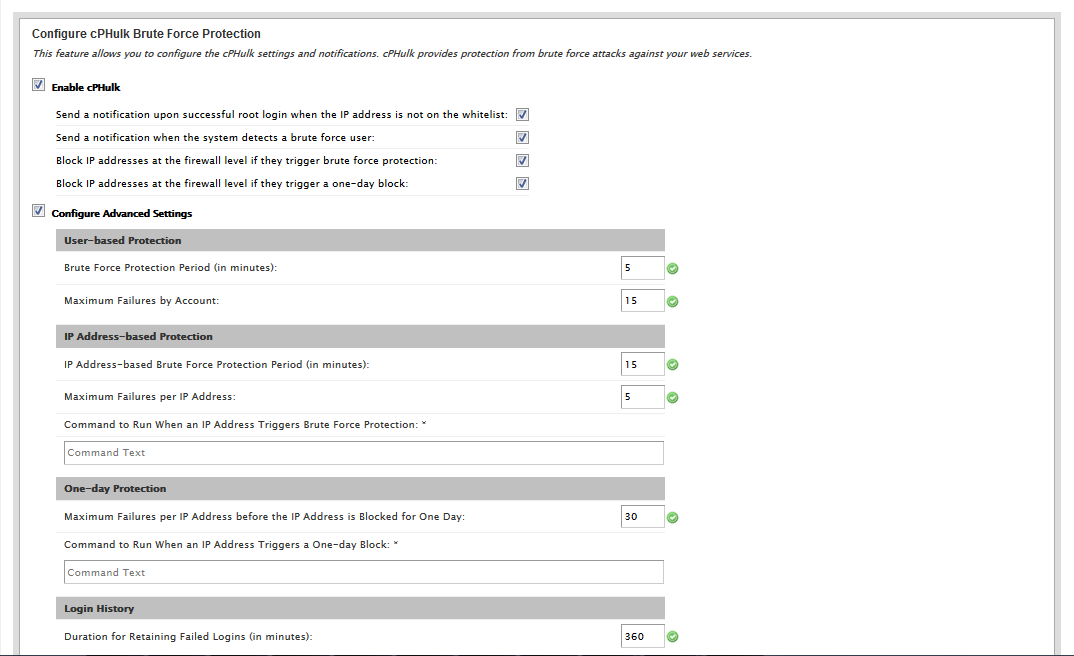
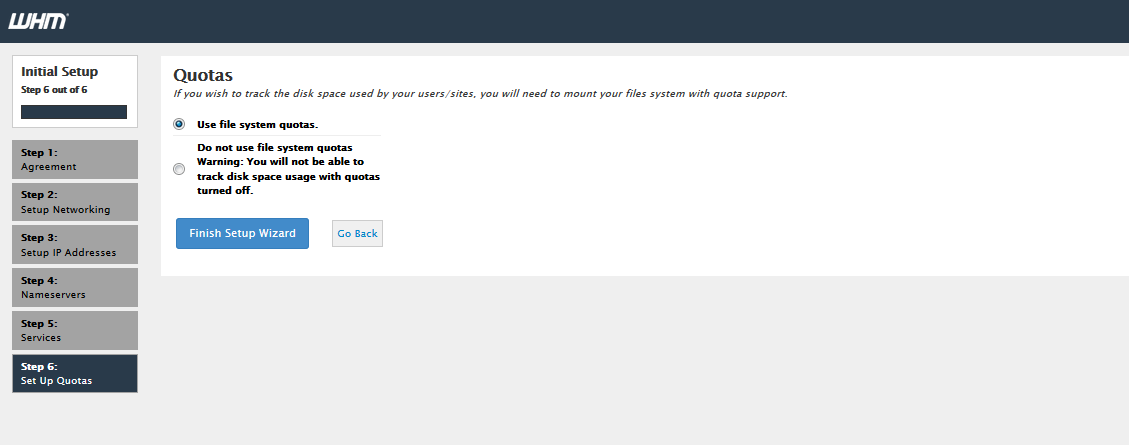
Step 6: In some cases, cPanel installer script is not ready to update the license on account of firewall or resolvers sections and you’ll see trial cautioning in the page. So you can run following command.
# /usr/local/cPanel/cpkeyclt
Note: Other Useful thing to know before you start working with cPanel and WHM.
cPanel directory :
cPanel script : /usr/local/cpanel/scripts
cPanel addons directory : /usr/local/cpanel/addons/
Base files like Phpmyadmin, skins : /usr/local/cpanel/base/
cPanel binaries : /usr/local/cpanel/bin/
CGI files : /usr/local/cpanel/cgi-sys/
cPanel access & error log files : /usr/local/cpanel/logs/
Whm related files : /usr/local/cpanel/whostmgr/
Apache : /etc/httpd/conf/httpd.conf
Exim mail : /etc/exim.conf
Named : /etc/named.conf
ProFTP and Pureftpd : /etc/proftpd.conf and /etc/pure-ftpd.conf
User file : /var/cPanel/users/username
Tweak settings : /var/cpanel/cpanel.config
Networking : /etc/sysconfig/network
Addons, parked and subdomain information : /etc/userdomains
cPanel update config file : /etc/cpupdate.conf
Clamav : /etc/clamav.conf
Mysql : /etc/my.cnf
PHP : /usr/local/lib/php.ini


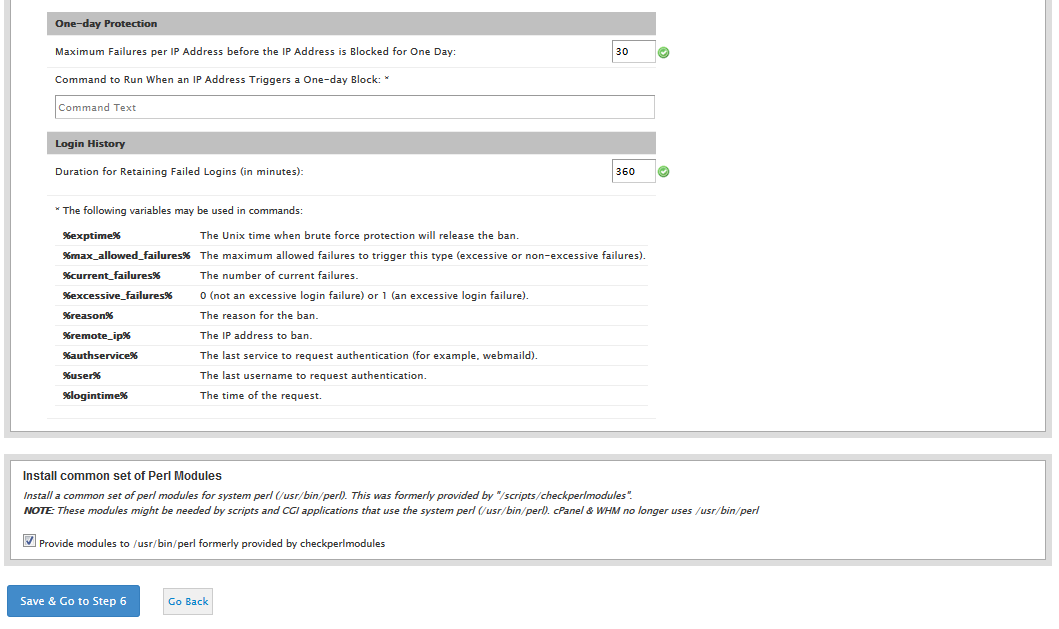

Thanks ,
Tutorial is nice but images not clear , so please upload clear snapshots.
Hi Mohit,
Thanks.
When you click on image then it will come in large size.
sir i click on img. but it is not big large.
Give me some time I will update the images.
I have updated the images Please check.